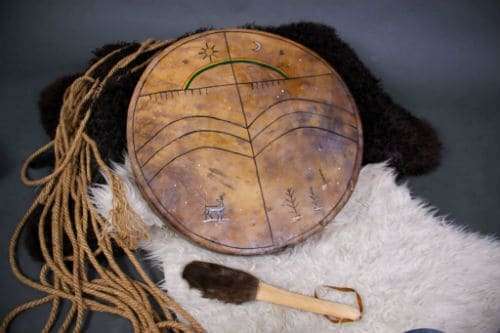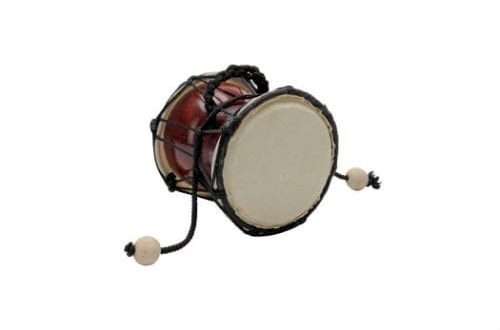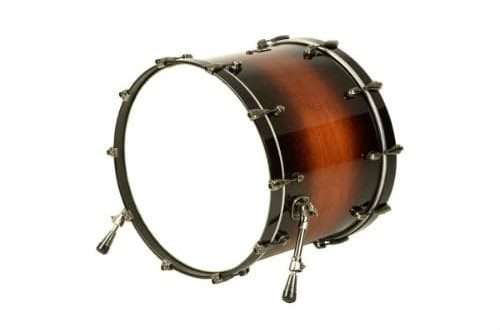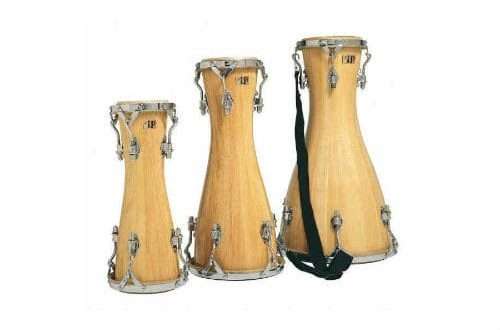
Tambourine: description of the instrument, composition, sound, history, types, use
The oldest ancestor of percussion musical instruments is the tambourine. Outwardly simple, it allows you to create an amazingly beautiful rhythmic pattern, can be used individually or sound in combination with other representatives of the orchestral family.
What is a tambourine
A kind of membranophone, the sound from which is extracted by means of finger strikes or wooden mallets. The design is a rim on which the membrane is stretched. The sound has an indefinite pitch. Subsequently, on the basis of this instrument, a drum and a tambourine will appear.

Устройство
The membranophone consists of a metal or wooden rim on which the membrane is stretched. In the classic version, this is the skin of animals. In different peoples, other materials can also act as a membrane. Metal plates are inserted into the rim. Some tambourines are equipped with bells; when struck on the membrane, they create an additional sound that combines the drum timbre with ringing.
History
Drum-like percussion musical instruments in ancient times were among different peoples of the world. In Asia, it appeared in the II-III century, around the same time it was used in Greece. From the Asian region, the movement of the tambourine to the west and east began. The instrument was widely used in Ireland, in Italy and Spain it became popular. Translated into Italian, the tambourine is called tamburino. Hence the terminology was distorted, but in fact the tambourine and tambourine are related instruments.
Membranophones played a special role in shamanism. Their sound was able to bring listeners to a hypnotic state, to put them into a trance. Each shaman had his own instrument, no one else could touch it. The skin of a cow or a ram was used as a membrane. It was pulled onto the rim with laces, secured with a metal ring.

In Russia, the tambourine was a military instrument. Its timbre sound raised the spirits of the soldiers before campaigns against the enemy. Beaters were used to produce sound. Later, the membranophone became an attribute of pagan ritual holidays. So at Shrovetide buffoons with the help of a tambourine called the people.
The percussion instrument was an integral part of the musical accompaniment of the Crusades in Southern Europe. In the West, since the end of the 22th century, it has been used in symphony orchestras. The size of the rim with plates differed among different peoples. The smallest tambourine “kanjira” was used by the Indians, the diameter of the musical instrument did not exceed 60 centimeters. The largest – about XNUMX centimeters – is the Irish version of “bojran”. It is played with sticks.
The original type of tambourine was used by Yakut and Altai shamans. There was a handle on the inside. Such an instrument became known as “Tungur”. And in the Middle East, sturgeon skin was used in the manufacture of membranophone. “Gaval” or “daf” had a special, soft sound.
Varieties
A tambourine is a musical instrument that has not lost its significance even over time. Today, two varieties of these membranophones are distinguished:
- Orchestral – used as part of symphony orchestras, found wide application in professional music. Metal plates are fixed in special slots in the rim, the membrane is made of plastic or leather. The parts of the orchestral tambourine in the scores are fixed on one ruler.
- Ethnic – the most extensive variety in its appearance. Most often used in ritual performance. Tambourines can look and sound different, have all sorts of sizes. In addition to cymbals, for a variety of sounds, bells are used, which are pulled on a wire under a membrane. Widespread in shamanic culture. Decorated with drawings, carvings on the rim.

Using
Popular modern music encourages the use of the tambourine. It can often be heard in the rock compositions “Deep Purple”, “Black Sabbath”. The sound of the instrument is invariably in folk and ethno-fusion directions. Tambourine often fills the gaps in vocal compositions. One of the first to use this way to decorate songs was Liam Gallagher, the frontman of the band Oasis. Tambourines and maracas entered his compositions at intervals where he stopped singing, creating an original rhythmic accompaniment.
It may seem that the tambourine is a simple percussion instrument that anyone can master. In fact, for a virtuoso playing the tambourine, you need a good ear, a sense of rhythm. True virtuosos of playing the membranophone arrange real shows from the performance, throwing it up, hitting it on different parts of the body, changing the speed of shaking. Skillful musicians make him produce not only a strumming voiced or dull timbre sound. The tambourine can howl, “sing”, bewitching, forcing you to listen to every change in the unique sound.





